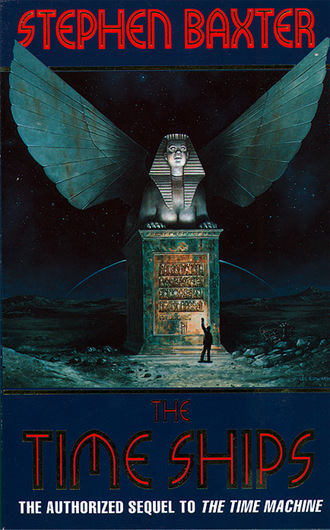Imagine a ray of light from some distant star overtaking the earth in, say, January, as our planet traverses its orbit around the sun. The speed of the earth in its orbit is some seventy thousand miles per hour. You would imagine – if you were to measure the speed of that passing ray of star-light as seen from the earth – that the result would be reduced by that seventy thousand-odd miles per hour.
Conversely, in July, the earth will at the opposite side of its orbit: it will now be heading into the path of that faithful star-light beam. Measure the speed of the beam again, and you would expect to find the recorded speed increased by the earth’s velocity.
Well, if steam trains came to us from the stars, this would no doubt be the case. But Michelson and Morley proved that for star-light, this is not so. The speed of the star-light as measured from the earth – whether we are overtaking or heading into the beam – is exactly the same!’
These observations had correlated with the sort of phenomenon I had noted about Plattnerite for some years previously – though I had not published the results of my experiments – and I had formulated an hypothesis.
‘One only needs to loosen the shackles of the imagination – particularly regarding the business of Dimensions – to see what the elements of an explanation might be. How do we measure speed, after all? Only with devices which record intervals in different Dimensions: a distance travelled through Space, measured with a simple yardstick, and an interval in Time, which may be recorded with a clock.
‘So, if we take the experimental evidence of Michelson and Morley at face value, then we have to regard the speed of light as the fixed quantity, and the Dimensions as variable things. The universe adjusts itself in order to render our light-speed measurements constant.
‘I saw that one could express this geometrically, as a twisting of the Dimensions.’ I held up my hand, with two fingers and thumb held at right angles. ‘If we are in a framework of Four Dimensions – well, imagine rotating the whole business around, like this –’ I twisted my wrist ‘– so that Length comes to rest where Breadth used to be, and Breadth where Height was – and, most important, Duration and a Dimension of Space are interchanged. Do you see? One would not need a full transposition, of course – just a certain intermingling of the two to explain the Michelson-Morley adjustment.
‘I have kept these speculations to myself,’ I said. ‘I am not well-known as a theoretician. Besides, I have been reluctant to publish without experimental verification. But there are – were – others thinking along the same lines – I know of Fitzgerald in Dublin, Lorentz in Leiden, and Henri Poincaré in France – and it cannot be long before some more complete theory is expounded, dealing with this relativeness of frames of reference …
‘Well, then, this is the essence of my Time Machine,’ I concluded. ‘The machine twists Space and Time around itself, thus mutating Time into a Spatial Dimension – and then one may proceed, into past or future, as easy as riding a bicycle!’
I sat back in my chair; given the uncomfortable circumstances of this lecture, I told myself, I had acquitted myself remarkably well.
But my Morlock was not an appreciative audience. He stood there, regarding me through his blue goggles. Then, at length, he said, ‘Yes. But how, exactly?’
11
OUT OF THE CAGE
This response irritated me intensely! I got out of my chair and began to pace about my Cage. I came near to Nebogipfel, but I managed to resist the impulse to lapse into threatening simian gestures. I flatly refused to answer any more questions until he showed me something of his Sphere-world.
‘Look here,’ I said, ‘don’t you think you’re being a little unfair? After all, I’ve travelled across six hundred thousand years to see something of your world. And all I’ve had so far is a darkened hill-side in Richmond, and –’ I waved a hand at the encircling darkness ‘– this, and your endless questions!
‘Look at it this way, Nebogipfel. I know you will want me to give you a full account of my journey through time, and what I saw of History as it unfolded to your present. How can I tell such a tale if I have no understanding of its conclusion? – let alone of that other History which I witnessed.’
I left my speech there, hoping I had done enough to convince him.
He lifted his hand to his face; his thin, pallid fingers adjusted the goggles resting there, like any gentleman adjusting a pince-nez. ‘I will consult about this,’ he said at last. ‘We will speak again.’
And he departed. I watched him walk away, his bare soles pad-padding across the soft, starry Floor.
After I had slept once more, Nebogipfel returned. He raised his hand and beckoned; it was a stiff, unnatural gesture, as if he had learned it only recently.
‘Come with me,’ he said.
With a surge of exhilaration – tinged with not a little fear – I snatched my jacket up from the Floor.
I walked beside Nebogipfel, into the darkness which had encircled me for so many days. My shaft of sunlight receded behind me. I glanced back at the little spot which had been my inhospitable home, with its disordered trays, its heap of blankets, and my chair – perhaps the only chair in the world! I will not say I watched it go with any nostalgia, for I had been miserable and fearful during the whole of my stay in that Cage of Light, but I did wonder whether I would ever see it again.
Beneath our feet, the eternal stars hung like a million Chinese lanterns, borne on the breast of an invisible river.
As we walked, Nebogipfel held out blue goggles, very like the set he wore himself. I took these, but I protested: ‘What do I need of these? I am not dazzled, as you are –’
‘They are not for light. They are for darkness. Put them on.’
I lifted the goggles to my face. The set was built on two hoops of some pliable substance, which sandwiched the blue glass of the goggles itself; when I lifted the goggles to my face, the hoops slipped easily around my head and gripped there lightly.
I turned my head. I had no impression of blueness, despite the tint of my goggles. That shaft of sunlight seemed as bright as ever, and the image of Nebogipfel was as clear as it had been before. ‘They don’t seem to work,’ I said.
For answer, Nebogipfel tipped his head downwards.
I followed his gaze – and my step faltered. For, beneath my feet and through the soft Floor, the stars blazed. Those lights were no longer masked by the sheen of the Floor, or by my eyes’ poor dark-adaptation; it was as if I stood poised above some starry night in the mountains of Wales or Scotland! I suffered an intense stab of vertigo, as you might imagine.
I detected a trace of impatience about Nebogipfel now – he seemed anxious to proceed. We walked on in silence.
Within a very few paces, it seemed to me, Nebogipfel slowed, and I saw now, thanks to my goggles, that a wall lay a few feet from us. I reached out and touched its soot-black surface, but it had only the soft, warm texture of the Floor. I could not understand how we had reached the boundaries of this chamber so quickly. I wondered if somehow we had walked along some moving pavement which had assisted our footsteps; but Nebogipfel volunteered no information.
‘Tell me what this place is, before we leave it,’ I said.
His flaxen-haired head turned towards me. ‘An empty chamber.’
‘How wide?’
‘Approximately two thousand miles.’
I tried to conceal my reaction to this. Two thousand miles? Had I been alone, in a prison cell large enough to hold an ocean? ‘You have a great deal of room here,’ I said evenly.
‘The Sphere is large,’ he said. ‘If you are accustomed only to planetary distances, you may find it difficult to appreciate how large. The Sphere fills the orbit of the primal planet you called Venus. It has a surface area corresponding to nearly three hundred million earths –’
‘Three hundred million?’
My amazement met only with a blank stare from the Morlock, and more of that subtle impatience. I understood his restlessness, and yet I felt resentful – and a little embarrassed. To the Morlock, I was like some irritating man from the Congo come to London, who must ask the purpose and provenance of the simplest items, such as a fork or a pair of trousers!
To me, I reasoned, the Sphere was a startling construction! – but so might the Pyramids have been to some Neandertaler. For this complacent Morlock, the Sphere around the sun was part of the historic furniture of the world, no more to be remarked on than a landscape tamed by a thousand years of agriculture.
A door opened before us – it did not fold back, you understand, but rather it seemed to scissor itself away, much as does the diaphragm of a camera – and we stepped forward.
I gasped, and almost stumbled backwards. Nebogipfel watched me with his usual analytical calm.
From a room the size of a world – a room carpeted with stars – a million Morlock faces swivelled towards me.
12
THE MORLOCKS OF THE SPHERE
You must imagine that place: a single immense room, with a carpet of stars and a complex, engineered ceiling, and all of it going on forever, without walls. It was a place of black and silver, without any other colour. The Floor was marked out by partitions that came up to chest-height, though there were no dividing walls: there were no enclosed areas, nothing resembling our offices or homes, anywhere.
And there were Morlocks, a pale scattering of them, all across that transparent Floor; their faces were like grey flakes of snow sprinkled over the starry carpet. The place was filled with their voices: their constant, liquid babbling washed over me, oceanic in itself, and remote from the sounds of the human palate – and removed, too, from the dry voice Nebogipfel had become accustomed to using in my company.
There was a line at infinity, utterly straight and a little blurred by dust and mist, where the Roof met the Floor. And that line showed none of the bowing effect that one sometimes sees as one studies an ocean. It is hard to describe – it may seem that such things are beyond one’s intuition until they are experienced – but at that moment, standing there, I knew I was not on the surface of any planet. There was no far horizon beyond which rows of Morlocks were hidden, like receding sea-going ships; instead I knew that the earth’s tight, compact contours were far away. My heart sank, and I was quite daunted.
Nebogipfel stepped forward to me. He had doffed his goggles, and I had an impression it was with relief. ‘Come,’ he said gently. ‘Are you afraid? This is what you wanted to see. We will walk. And we will talk further.’
With great hesitation – it took me a genuine effort to step forward, away from the wall of my immense prison cell – I came after him.
I caused quite a stir in the population. Their little faces were all around me, huge-eyed and chinless. I shrank away from them as I walked, my dread of their cold flesh renewed. Some of them reached towards me, with their long, hair-covered arms. I could smell something of their bodies, a sweet, musty smell that was all too familiar. Most walked as upright as a man, although some preferred to lope along like an orang-utan, with knuckles grazing the Floor. Many of them had their hair, on scalp and back, coiffed in some style or other, some in a plain and severe fashion, like Nebogipfel, and some in a more flowing, decorative style. But there were one or two whose hair ran as wild and ragged as any Morlock’s I had encountered in Weena’s world, and at first I suspected that these individuals still ran savage, even here in this city-room; but they behaved as easily as the rest, and I hypothesized that these unkempt manes were simply another form of affectation – much as a man will sometimes allow his beard to grow to great profusion.
I became aware that I was passing by these Morlocks with remarkable speed – much quicker than my pace allowed. I almost stumbled at this realization. I glanced down, but I could see nothing to differentiate the stretch of transparent Floor on which I walked from any other; but I knew I must be on some form of moving pavement.
The crowding, pallid Morlock faces, the absence of colour, the flatness of the horizon, my unnatural speed through this bizarre landscape – and above all, the illusion that I was floating above a bottomless well of stars – combined into the semblance of a dream! – But then some curious Morlock would come too close, and I would get a whiff of his sickly scent, and reality pressed in again.
This was no dream: I was lost, I realized, marooned in this sea of Morlocks, and again I had to struggle to keep walking steadily, to avoid bunching my fists and driving them into the curious faces pressing around me.
I saw how the Morlocks were going about their mysterious business. Some were walking, some conversing, some eating food of the bland, uninteresting type which had been served to me, all as uninhibited as kittens. This observation, combined with the utter lack of any enclosed spaces, led me to understand that the Morlocks of the Sphere had no need of privacy, in the sense we understand it.
Most of the Morlocks seemed to me to be working, though at what I could not fathom. The surfaces of some of their partitions were inlaid with panes of a blue, glowing glass, and the Morlocks touched these panes with their thin, wormlike fingers, or talked earnestly into them. In response, graphs, pictures and text scrolled across the glass slabs. In some places this remarkable machinery was carried a stage further, and I saw elaborate models – representing what I could not say – springing into existence in mid-air. At a Morlock’s command, a model would rotate, or split open, displaying its interior – or fly apart, in dwindling arrays of floating cubes of coloured light.
And all of this activity, you must imagine, was immersed in a constant flow of the Morlocks’ liquid, guttural tongue.
Now we passed a place where a fresh partition was emerging from the Floor below. It rose up complete and finished like something emerging from a vat of mercury; when its growth was done it had become a thin slab about four feet high featuring three of the omnipresent blue windows. When I crouched down to peer through the transparent Floor, I could see nothing beneath the surface: no box, or uplifting machinery. It was as if the partition had appeared out of nothing. ‘Where does it come from?’ I asked Nebogipfel.
He said, after some thought – evidently he had to choose his words: ‘The Sphere has a Memory. It has machines which enable it to store that Memory. And the form of the data blocks –’ he meant the partitions ‘– is held in the Sphere’s Memory, to be retrieved in this material form as desired.’
For my entertainment, Nebogipfel caused more extrusions: on one pillar I saw a tray of foodstuffs and water rising out of the floor, as if prepared by some invisible butler!
I was struck by this idea of extrusions from the uniform and featureless Floor. It reminded me of the Platonist theory of thought expounded by some philosophers: that to every object there exists, in some realm, an ideal Form – an essence of Chair, the summation of Table-ness, and so on – and when an object is manufactured in our world, templates stored in the Platonic over-world are consulted.
Well, here I was in a Platonic universe made real: the whole of this mighty, sun-girdling Sphere was suffused by an artificial, god-like Memory – a Memory within whose rooms I walked even as we spoke. And within the Memory was stored the Ideal of every object the heart could desire – or at least, as desired by a Morlock heart.
How very convenient it would be to be able to manufacture and dissolve equipment and apparatus as one required! My great, draughty house in Richmond could be reduced to a single Room, I realized. In the morning, the bedroom furniture could be commanded to fade back into the carpet, to be replaced by the bathroom suite, and next the kitchen table. Like magic, the various apparatuses of my laboratory could be made to flow from the walls and ceiling, until I was ready to work. And at last, of an evening, I could summon up my dinner table, with its comfortable surrounds of fireplace and wallpaper; and perhaps the table could be manufactured already replete with food!
All our professions of builders, plumbers, carpenters and the like would disappear in a trice, I realized. The householder – the owner of such an Intelligent Room – would need to engage no more than a peripatetic cleaner (though perhaps the Room could take care of that too!), and perhaps there would be occasional boosts to the Room’s mechanical memory, to keep pace with the latest vogues …
So my fecund imagination ran on, quite out of my control.
I soon began to feel fatigued. Nebogipfel took me to a clear space – though there were Morlocks in the distance, all about me – and he tapped his foot on the Floor. A sort of shelter was extruded; it was perhaps four feet high, and little more than a roof set on four fat pillars: something like a substantial table, perhaps. Within the table there arose a bundle of blankets and a food-stand. I climbed into the hut gratefully – it was the first enclosure I had enjoyed since my arrival on the Sphere – and I acknowledged Nebogipfel’s consideration at providing it. I made a meal of water and some of the greenish cheese stuff, and I took off my goggles – I was immersed in the endless darkness of that Morlock world – and was able to sleep, with my head settled on a rolled-up blanket.
This odd little shelter was my home for the next few days, as I continued my tour of the Morlock’s city-chamber with Nebogipfel. Each time I arose, Nebogipfel had the Floor absorb the shelter once again, and he evoked it afresh in whatever place we stopped – so we had no luggage to carry! I have noted that the Morlocks did not sleep, and I think my antics in my hut were the source of considerable fascination to the natives of the Sphere – just as those of an orang-utan catch the eye of the civilized man, I suppose – and they would have crowded around me as I tried to sleep, pressing their little round faces in on me, and rest would have been impossible, had not Nebogipfel stayed by me, and deterred such sightseeing.
13
HOW THE MORLOCKS LIVED
In all the days Nebogipfel led me through that Morlock world, we never encountered a wall, door or other significant barrier. As near as I could make it out, we were restricted – the whole time – to a single chamber: but it was a chamber of a stupendous size. And it was, in its general details, homogenous, for everywhere I found this same carpet of Morlocks pursuing their obscure tasks. The simplest practicalities of such arrangements were startling enough; I considered, for example, the prosaic problems of maintaining a consistent and stable atmosphere, at an even temperature, pressure and humidity, over such scales of length. And yet, Nebogipfel gave me to understand, this was but one chamber in a sort of mosaic of them, that tiled the Sphere from Pole to Pole.
I soon came to understand that there were no cities on this Sphere, in the modern sense. The Morlock population was spread over these immense chambers, and there were no fixed sites for any given activity. If the Morlocks wished to assemble a work area – or clear it for some other purpose – the relevant apparatuses could be extruded directly from the Floor, or else absorbed back. Thus, rather than cities, there were to be found nodes of population of higher density – nodes which shifted and migrated, according to purpose.
After one sleep I had clambered out of the shelter and was sitting cross-legged on the Floor, sipping water. Nebogipfel remained standing, seemingly without fatigue. Then I saw approaching us a brace of Morlocks, the sight of which made me swallow a mouthful of water too hastily; I sputtered, and droplets of water sprayed across my jacket and trousers.
I supposed the pair were indeed Morlocks – but they were like no Morlocks I had seen before: whereas Nebogipfel was a little under five feet tall, these were like cartoon caricatures, extended to a height of perhaps twelve feet! One of the long creatures noticed me, and he came loping over, metal splints on his legs clattering as he walked; he stepped over the intervening partitions like some huge gazelle.
He bent down and peered at me. His red-grey eyes were the size of dinner-plates, and I quailed away from him. His odour was sharp, like burned almonds. His limbs were long and fragile-looking, and his skin seemed stretched over that extended skeleton: I was able to see, embedded in one shin and quite visible through drum-tight skin, the profile of a tibia no less than four feet long. Splints of some soft metal were attached to those long leg-bones, evidently to help strengthen them against snapping. This attenuated beast seemed to have no greater number of follicles than your average Morlock, so that his hair was scattered over that stretched-out frame, in a very ugly fashion.
He exchanged a few liquid syllables with Nebogipfel, then rejoined his companion and – with many a backward glance at me – went on his way.
I turned to Nebogipfel, stunned; even he seemed an oasis of normality after that vision.
Nebogipfel said, ‘They are –’ a liquid word I could not repeat ‘– from the higher latitudes.’ He glanced after our two visitors. ‘You can see that they are unsuited to this equatorial region. Splints are required to help them walk, and –’
‘I don’t see it at all,’ I broke in. ‘What’s so different about the higher latitudes?’
‘Gravity,’ he said.
Dimly, I began to understand.
The Morlocks’ Sphere was, as I have recorded, a titanic construction which filled up the orbit once occupied by Venus. And – Nebogipfel told me now – the whole thing rotated, about an axis. Once, Venus’s year had been two hundred and twenty-five days. Now – said Nebogipfel – the great Sphere turned in just seven days and thirteen hours!
‘And so the rotation –’ Nebogipfel began.
‘– induces centrifugal effects, simulating the earth’s gravity at the equator. Yes,’ I said, ‘I see it.’
The spin of the Sphere kept us all plastered to this Floor. But away from the equator, the turning circle of a point on the Sphere about the rotation axis was less, and so the effective gravity was reduced: gravity dwindled to zero, in fact, at the Sphere’s rotation poles. And in those extraordinary, broad continents of lower gravity, such remarkable animals as those two loping Morlocks lived, and had adapted to their conditions.
I thumped my forehead with the back of my hand.
‘Sometimes I think I am the greatest fool who ever lived!’ I exclaimed to the bemused Nebogipfel. For I had never thought to inquire about the source of my ‘weight’, here on the Sphere. What sort of scientist was it who failed to question – even to observe properly – the ‘gravity’ which, in the absence of anything so convenient as a planet, glued him to the surface of this Sphere? I wondered how many other marvels I was passing by, simply from the fact that it did not occur to me to ask about them – and yet to Nebogipfel such features were merely a part of the world, of no more novelty than a sunset, or a butterfly’s wing.
I teased out of Nebogipfel details of how the Morlocks lived. It was difficult, for I scarcely knew how to begin even to phrase my questions. That may seem odd to state – but how was I to ask, for instance, about the machinery which underpinned this transforming Floor? It was doubtful if my language contained the concepts required even to frame the query, just as a Neandertaler would lack the linguistic tools to inquire about the workings of a clock. And as to the social and other arrangements which, invisibly, governed the lives of the millions of Morlocks in this immense chamber, I remained as ignorant as might a tribesman arrived in London fresh from Central Africa would have been of social movements, of telephone and telegraph wires, of the Parcels Delivery Company, and the like. Even their arrangements for sewage remained a mystery to me!











